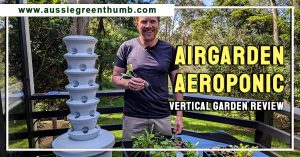Slow release fertilisers are wide ranging, and undeniably beneficial to our gardens and houseplants. Even the loveliest, loamiest, garden soil can have hidden deficiencies. Soil testing kits are supposed to be simple, but can be daunting, and fast-acting liquid fertilisers often upset the balance and can cause nutrient burn.
In this article I’m going to share some thoughts on using slow release fertiliser as an alternative to both, but also help you to avoid overuse and a few common mistakes along the way.
More...
Top Pick

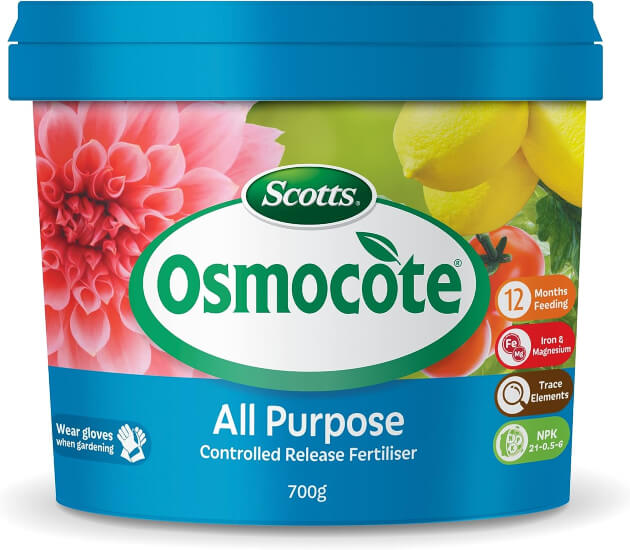
Premium Choice


Best Value

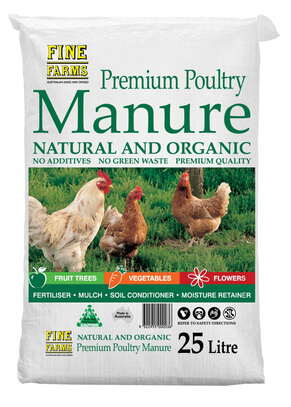
Product | Our Rating | Price | |
|---|---|---|---|
1. Scotts Osmocote Controlled Release All Purpose Fertiliser |  |  | |
2. Miracle-Gro Push and Feed All Plant Food | 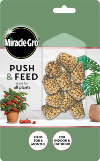 | ||
3. Charlie Carp All Purpose Pellets Slow Fertiliser |  | ||
4. Miracle-Gro Indoor Plant Food Spikes |  |  | |
5. Yates Thrive Indoor Plant Fertiliser Dripper | 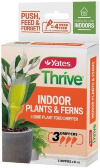 | ||
6. Fine Farms Premium Poultry Manure | 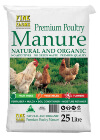 |  | |
7. Scotts Lawn Builder Premium Slow Release Lawn Fertiliser | 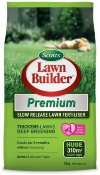 | ||
8. Yates Dynamic Lifter Concentrated Organic Plant Fertiliser | 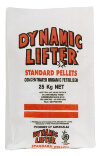 | ||
9. Fine Farms Poultry Manure Blend | 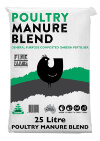 |
What are Slow Release Fertilisers?
Slow release fertilisers provide consistent nutrients and minerals to your garden plants, and often help to fill in the gaps where pour and feed fertilisers fail. For example, nearly all common tomato feeds lack calcium, an essential mineral for the development of fruit.
By adding slow release fertilisers at the start of the growing season, particularly those with targeted nutrients, you can vastly improve your harvest as well as saving money on expensive liquid feeds.
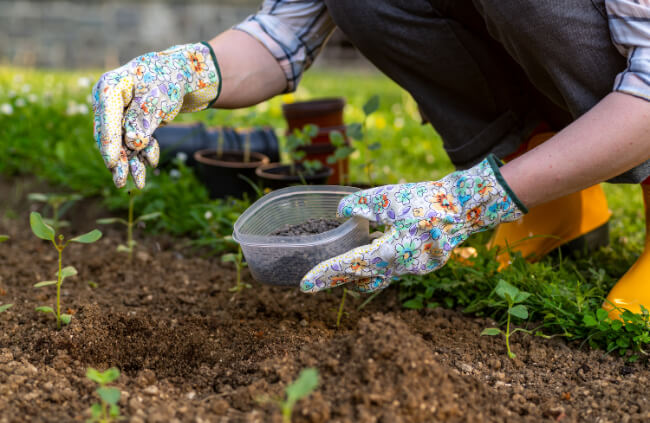
Are there Different Types of Slow Release Fertilisers?
Slow release fertiliser comes in many guises, and is a fairly general term often used to include things like soil improvers and compost too. In terms of getting the most for your money though, granular fertilisers make the most sense, adding nutrients and minerals to your soil that can last up to a year.
Some soft pellets, like chicken manure, can decompose quickly, and even be mixed up for fast acting feeds during the growing season, while fertiliser spikes are particularly good for house plants and flowering shrubs as they take longer to break down and offer gentler nutrients to perennial plants with fibrous root systems.
When & How to Use Slow Release fertilisers?
You can use slow release fertilisers at any time of year, particularly with house plants, which tend not to have a seasonal cycle. However, the best time to use slow release fertilisers is nearly always in spring when the growing season is coming into full swing, but this depends on the type of plants you’re feeding, and why.
On vegetables
Vegetables should receive a treatment of slow release fertiliser at the start of their growing season. In some cases that will be enough for the entire cycle, but most branded slow release fertilisers last for three months and therefore need reapplication when fruiting begins.
On trees & shrubs
When planting trees or shrubs for the first time, if there are clear soil deficiencies, it’s worth adding some sort of slow release fertiliser, but as a general rule of thumb, I would avoid it. Root supports like mycorrhizal fungi are more effective at this stage to help them root into the surrounding soil and hunt for their own nutrients.
Instead, feed them with something like pelletized chicken manure or a targeted slow release fertiliser from fruit trees in late winter.
On lawns
Grass is one of the hungriest plants in your garden. If you’ve even dug a lawn up and inspected the soil beneath, it’s shocking how drained of goodness it can be. Lawn fertilisers are mostly quick release but there are some great longer lasting lawn fertilisers out there that continue feeding lawns for up to six months.
Apply according to packet instructions.
On houseplants
You can feed houseplants nearly all year round, but anything that goes dormant in winter should be left alone. Slow release fertilisers for houseplants come in spike form. Either as basket spikes for granular feeds, or compacted self-contained spikes which usually last for about three months.
Using Slow Release Fertiliser for Quick Impact, and Why
Slow release fertilisers often have more rounded nutrients and minerals than quick release fertilisers. If you notice significant problems on plants that could stem from calcium or magnesium deficiencies, using pelletized chicken manure and leaving it to steep in water overnight will give you a fast-acting solution.


Get Your Free Guide:
Master Growing Australian Natives eBook
A Must Have Complete Guide for Every Australian Garden
Get Your Free Guide:
Master Growing Australian Natives eBook
A Must Have Complete Guide for Every Australian Garden
Slow Release Fertiliser Buyers' Guide
What to Look for When Buying Slow Release Fertilisers
Like any fertiliser, slow release fertilisers have two key things to check for macronutrients and minerals, but it’s also worth considering the environmental impact of your plant food by making sure it is organic, and sustainably sourced.
NPK
Macronutrients, nearly always used to refer to the nitrogen, phosphorus and potassium (N-P-K) percentage of a fertiliser, are the basic building blocks for plant health.
Slow release fertilisers will usually have NPK values around 6-6-6, but vary greatly. The only real rule here is that the NPK should either be balanced, or targeted at a specific plant group.
Mineral constituents & Trace elements
Minerals are more important than we give them credit for. They support access and uptake of other nutrients and help plants to develop resilience to disease. Magnesium, calcium and zinc are the most commonly required in most plant groups.
Good slow release fertilisers will list their mineral constituents, unless they’re from completely natural sources, which means the variations are often too high.
Organic and sustainable fertilisers
Gardening is about being with the earth. It’s not a natural pursuit, but it does help us to connect with the soil and the plants that form the basis for life.
Most gardeners today are passionate about organic gardening, so do take time to think about the source of these fertilisers, and whether they are either organic or sustainable, or both.
Peat is, as an example, completely organic and natural, but it isn’t sustainable. Pelletized granular feeds are rarely organic, but they are sustainable. Manure is both sustainable and organic.
How long it lasts
Different types of slow release fertilisers last longer than others. Powdered dressings usually keep feeding plants for around three months, and organic pellets can take the same sort of time to rot down.
Compacted sticks of fertiliser usually last the longest, but nothing lasts longer than mulch or soil improver.
Different Types of Slow Release Fertiliser
There are four main groups of slow release fertilisers, each with their own applications. They are: spikes, granular feeds, soil treatments and water soluble feeds.

Fertiliser spikes
Fertiliser spikes are expensive but effective. Miracle Gro is the biggest brand in the house plant fertiliser game, and has the market pretty cornered, but their houseplant spikes are fantastic, long-lasting and effective.
Granular fertilisers
Granular fertiliser is a cover-all term for pelletized manures as well as inorganic slow release feeds. Both are great ways to feed your garden for longer.
Dyed pellets are sometimes a good way to feed container plants and hanging baskets simply because you can see them in the soil and track their decomposition visually.
Soil treatments
While soil treatments aren’t necessarily a fertiliser they add nutrients and essential minerals to your garden. Gypsum helps to improve plant health and add essential calcium to struggling plants, but wouldn’t be considered a fertiliser by most gardeners.
Water soluble fertilisers
Water soluble slow release fertilisers are mostly powered feeds, and are widely used to treat lawns. They can be applied as thin sprinkles and watered in or diluted into water before distributing.
Best Slow Release Fertilisers Reviews
Slow Release Fertilisers for All Round Use
1. Scotts Osmocote Controlled Release All Purpose Fertiliser

Rather than looking at each Osmocote product individually, it’s worth considering them as a group, because no Osmocote fertiliser will work for every plant in your garden (even the all-purpose fertiliser).
Osmocote is one of the bestselling fertiliser brands in Australia, and their granular feeds are incredibly useful for any garden who wants an easy life. While they are far from organic, they are sustainable, and safe for insects and soil life.
They aren’t all identical, but what they do have in common is a standard six month slow release time frame, meaning you can feed your tubs, pots, baskets, beds, and borders in spring, and continue seeing the results through to late summer.
Nearly all Osmote products are designed to work safely on Australian natives, with limited phosphorus.
2. Miracle-Gro Push and Feed All Plant Food

With a wider range of applications thanks to a better NPK balance, Miracle Gro’s push and feed plant food is a compacted version of their granular feed. Six months’ worth of plant food in nine handy capsules means you can feed everything from house plants to veggies, keeping them happy and healthy.
These granular push-and-feed cones even have added trace minerals to support plant health, as well as just growth.
3. Charlie Carp All Purpose Pellets Slow Fertiliser

Charlie Carp are a great Aussie fertiliser brand, helping to build more sustainable environments and using the by-products to create organic, sustainable plant food.
By removing European carp (an invasive species) from Australian waterways, this replacement for powdered fish blood and bone, is packed with trace elements and a fairly typical NPK of 6-1-3 which is a good balance for most veggies, and flowering herbaceous plants alike.
The first time we used it here, we were a little bit worried about the smell, but it really is odourless, unlike many naturally derived feeds.
Slow Release Fertilisers for House Plants
4. Miracle-Gro Indoor Plant Food Spikes

There’s a bit of a process involved in Miracle Gro’s Indoor Plant Food Spikes, and they don’t replace good house plant care, but they’re long-lasting, low on packaging, and effective.
Use the green dibber to make a hole in moist compost, push one spike into each house plant container so it just pokes out of the soil (that way you can keep an eye on it).
After that, keep your plants properly watered and they will continue to provide simple, accessible nutrients for up to two months (one month in warmer conditions as they dissolve faster with frequent watering).
5. Yates Thrive Indoor Plant Fertiliser Dripper
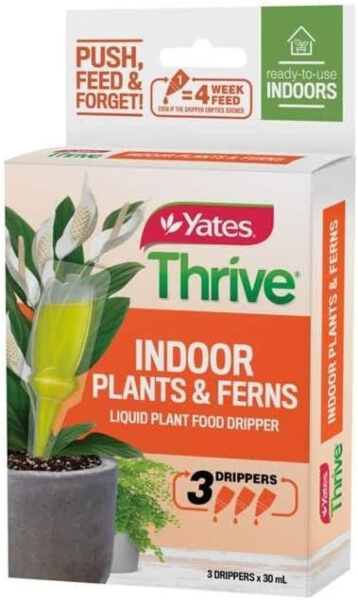
Drippers are the easiest way to provide slow release nutrients to your house plants, but they do come with the frustrating addition of rather unnecessary plastic.
Despite their wastefulness, plastic drip feeds are incredibly effective at boosting houseplant health and vastly superior to granular feeds when it comes to targeting foliage plants.
Peace lilies, ferns, philodendrons, cast iron plants, and pretty much any foliage focussed house plant will thrive with the addition of these fertiliser drips, which last for a month per drip.
Slow Release Fertilisers for Vegetables and Lawns
6. Fine Farms Premium Poultry Manure

Fine Farms Premium Poultry Manure is a pure chicken manure fertiliser. It’s stronger than blended products, and both faster acting and longer lasting. Any fruiting plants, or root veggies will benefit hugely from a single application of this chicken manure fertiliser in spring, and you should see lasting results through the entire growing season.
Like any chicken manure, whether fresh or dried, its effects last in the soil too. So after a single application you’ll notice benefits for several years, but will get better results with annual use.
7. Scotts Lawn Builder Premium Slow Release Lawn Fertiliser

Scotts Lawn Builder Premium offers 3 months’ worth of slow release feed. While they also offer lawn feeds with weed killers built in, this is primarily about prolonging the feeding timeline and ensuring your lawn gets the nitrogen it needs to stay lush and green.
One application through spring and one in summer should be enough to rebuild a perfect lawn.
8. Yates Dynamic Lifter Concentrated Organic Plant Fertiliser
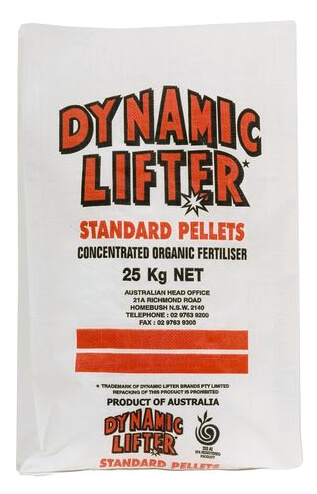
Mulch is always the best route to a healthy garden, but in pots and raised beds it’s often not possible. Slow release fertiliser pellets like this bulk bag or Dynamic Lifter from Yates covers 250m2 of beds and borders, and a conservative sprinkle boosts your soil in a similar way to mulching.
Its 3-1-1.5 NPK is ideal as a general feed, adding a gentle boost to soil that won’t harm worms and other organisms.
9. Fine Farms Poultry Manure Blend
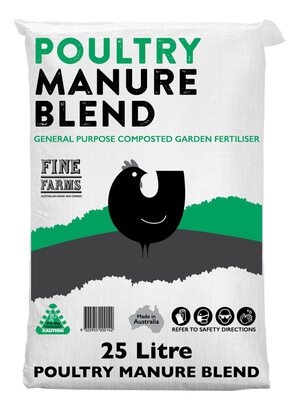
Gentle, ready to use chicken manure that’s perfect for veggies and flower borders alike. If diluted and dissolved into water it even makes a handy lawn feed. Fine Farms are a brilliant budget brand for chicken manure, but without any compromise on quality.
If you’re after a slow release fertiliser that’s safe to use around the entire garden, this is one of the best.
Aussie Green Thumb Slow Release Fertiliser Top Picks for 2025
Top Rated Slow Release Fertiliser


Scotts Osmocote is a great go-to for any gardener, regardless of your needs. Their wide range of slow release fertilisers means you’ll be able to find something to suit all your plants, and provide them with reliable nutrients for up to six months.
While Osmocote isn’t organic, it’s sustainable and reliable, with not much packaging (and the tubs make great DIY seed trays if you like upcycling). It’s our go-to, and the go-to for most of Australia for one simple reason… it works.
Premium Choice Slow Release Fertiliser


Miracle Gro’s Indoor Plant food spikes need regular application, and if you’ve got a big collection of house plants, can be more expensive than cheap pouring feeds. However, they are a better way to support overall plant health, and they do a brilliant job at it.
With easy application, and a simple way to keep track of them (just look if they’re dissolved before replacing), they offer everything your foliage house plants need for months at a time.
Best Value Slow Release Fertiliser


Good old fashioned chicken manure is an unbeatable slow release fertiliser when it comes to keeping your garden on budget. Fine Farms process and dry their chicken manure, which reduces odours, slows down nutrient release, and makes it far easier to handle and spread around the garden.
What’s more, it’s suitable for nearly all outdoor plants.
DIY Slow Release Fertilisers
We use a mix of store-bought organic fertilisers and our own homegrown hacks here. By far my favourite, and the one which has particularly helped our struggling shrubs over the last three years has been rabbit manure, but there are plenty of ways to DIY your way to garden success with slow release fertilisers.
Chicken Manure
OK, so suburban gardens might not be the most practical place to keep chickens, but hens (not roosters!) are peaceful and friendly pets. They offer regular eggs, and their droppings are an incredibly rich source of nitrogen and calcium.
Depending on their feed, they can also produce manure with useful magnesium and a healthy amount of potassium – great for fruiting plants as well as lawns when watered down or dried.
Rabbit Manure
However, if you’d prefer not to start your own mini farm, pet rabbits are well worth considering. They make over 300 ready-made pellets of poop every single day, and it’s low in ammonia (a big problem with most fresh manures) while being high in nitrogen, potassium and phosphorus. Simple compost their litter tray, or throw as many droppings as you like around the garden.
Either rabbit or chicken manure will help to quickly improve soil structure, but rabbit manure is safe to use straight away, while chicken poop is best left to break down before use.
Compost
Any compost you can produce is worth producing. Use everything from lawn clippings to shredded bark and kitchen waste, and make sure each pile is no wider or taller than 1.5m to ensure good aeration to the centre. Turn it once a month and you can have usable compost in 6-12 months’ time.
Not only will it be packed with slow-release nutrients, you don’t even need to dig it in. Just lay it out in thick sheets of mulch around the base of your borers and watch them thrive.
Note: Home-made compost will always vary in nutrient levels. Use a mix of dry (brown materials) and fresh (green materials) to create a reasonably good structure, and add things like crushed egg shells, banana peels and coffee grounds regularly to boost essential nutrients.
Coffee Grounds or Tea Bags
You don’t need to compost coffee grounds or tea bags before using them as slow release fertilisers. Simply add them to the base of flowering shrubs. They help to gently maintain a slightly acidic pH in your soil, which nearly all shrubs prefer.
My grandad used to swear by old tea bags at the base of his camellia, and I still haven’t seen a more floriferous specimen to this day.
Trenching
For very hungry annual plants like beans, you can use a simple method called trenching which helps to create heat around the roots, and provide slower release nutrients than compost which lasts from spring through to winter.
Trenching is simple to carry out – just create a trench that’s about 20 cm deep and fill the base with a layer of kitchen waste (it can be part composted, or straight from the chopping board). Cover that with a single layer of newspaper, and a sprinkler of soil before planting your beans.
Alternatively, use comfrey leaves, chopped up and spread across the base of any planting hole (we use this method religiously for tomatoes).
Frequently Asked Questions About Slow Release Fertiliser
Is slow release fertiliser better?
Slow release fertiliser is better than most rapid action fertilisers, but their use cases are completely different. Rapid action fertilisers help to maintain hungry plants like tomatoes and beans, but they should still be treated with slow release fertiliser at the start of the season.
Can I put slow release fertiliser on top of the soil?
Slow release fertiliser can be applied directly to the soil surface. Rain will water it down, and worms will work it through, whether you’re treating mulch as fertiliser, or using pellets.
How often should you use slow release fertiliser?
Slow release fertilisers are seasonal soil treatments. Apply them to gardens once in spring, and depending on their strength, and duration, again in summer. Winter squashes may need a third application, but twice a year is a good rule of thumb.
Should I water slow release fertiliser?
You don’t need to water most slow release fertilisers, but plant spikes and indoor plant fertilisers are activated by moist soil, so it is essential. For outdoor plants, try to keep the soil evenly moist until visible slow release fertiliser has worked into the soil.
Is fish blood and bone a slow release fertiliser?
Fish blood and bone is a great slow release fertiliser, and most gardeners who still use traditional methods swear by it. Personally, I find the smell off-putting and find that it can attract rodents, but depending on where you lie, there are no slow release fertilisers that will offer more support to roses and fruit trees.
How long does slow release fertiliser take to work?
Most slow release fertilisers start to release nutrients as soon as they are in contact with moist soil. In some cases that can lead to nutrient uptake within hours, but for most, it takes a few days for slow release fertilisers to be taken up by roots.
Can slow release fertilisers burn plants?
Slow release fertilisers are specifically designed not to burn plants. They release nutrients slowly and efficiently, so there’s much less risk of nutrient burn.
For more information about fertilisers, its types, and everything in between, check out our Australian Garden Fertiliser Users Guide.
Utilise the Benefits of Slow Release Fertilisers in Your Garden
The first time you find yourself with a nutrient deficiency, the internet can seem pretty impossible to navigate. Your plants are in need of care and attention, and the answer always seems to be to use slow release fertilisers at the start of the season. In reality, it doesn’t help, because it seems too late.
But don’t fret. Remember that there are slow release feeds that can be adapted for fast action to fix your problems right now, and once you’ve got them, you can treat that part of the garden at the right time next year to avoid having the same issue again.
Published on August 18, 2023 by Gary Clarke
Last Updated on February 5, 2025




